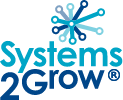Expectations vs Reality – creating usable operations manuals

We attended the Franchising Expo in Sydney last weekend. So good to meet so many business people wanting to franchise or get their businesses working like a franchise with systems in place so they can delegate with ease.
Disturbingly though were the business owners who come to speak to Brian and myself with a suite of unrealistic expectations on what was possible.
Here are some expectations with an explanation on what is more usually real…
Once they are done – they are done
I come across this one so often. Even from some very big and sophisticated franchise groups.
The expectation
Once you have put in the time, effort, and money to get your operations documented – you are done. No further input is needed.
The reality
So wrong. Getting the first cut of your operations up is just the first step.
Step 2 is to get them out as a pilot study to see if people can use your systems or not. Are they useful. Will people make the effort to go to the manual to find out how to do stuff or will they just make it up.
And what is their feedback. What do they want added, changed, taken out?
Step 3 is to make sure you have someone responsible for your operations. Someone who will work with your teams getting that feedback on what is wrong then keeping the ops updated and explaining to people how to use them.
Remember, things change, new processes come in and old ones need to be taken out. Operations are always on the move.
Keeping systems updated is so important. If yours are not well maintained – no one will use them. Such a waste after all that effort in getting them up and running in the first place.
Just start
The expectation
So many people have come to me saying I just tried to start documenting processes I know are needed.
The reality
But then they tell me that they have become confused and don’t know what to do next. Things just don’t flow, and the systems become confused, each conflicting with another.
The key is to do some planning. But here’s the line.
Too much planning and no documenting can slow you down too because it is difficult to see the whole picture up front and there is a point where you DO need to just start. And then, when you realise things are in the wrong place – adjust the plan and move on.
So, this one has good points and some not so good aspects. The thing is to know when to draw that line.
Just write each set of systems in one place
The expectation
So, you start with a plan and the first suite of documents you decide to write involves the sales process.
- Make the first call
- Set up a meeting
- Attend the meeting
- Record the outcome in the CRM
- Do a follow up phone call
- Close the sale
- Enter the invoice into the accounting system
The expectation is you just document all of this in the sales systems.
The reality
The thing is this suite of actions involves tasks which cover lots of different kinds of actions.
Phone calls, face to face meetings, use of different software systems…
What you will find is that some of these processes actually don’t live in the sales section even though they are used there – yes you’ll link to that procedure when required but software especially lives with the software systems so it is easy to find once you are more experienced.
You are creating a web – not a linear system. It is this web which leads to the overwhelm.
An upfront plan and a flexible approach to documenting your systems really helps.
Replicate operations in training
The expectation
Many business people start writing operations for their training processes and then there is a tendency to think about these operations as training and not how to procedures.
The reality
Once training and operations become confused with each other people become confused altogether. Where should they go to find things? What do the training processes involve? How are they supposed to find out what to do when they have forgotten that bit of training that they fell asleep through?
The key is to keep the how to procedures in one place – the operations manuals. And then put training processes in place which use the operations manual to teach. This way you are training staff to do the tasks in question and you are teaching them how to use your manuals at the same time.
Paper documents are the way to go – it’s cheaper
The expectation
It amazes me today that so many still think it’s OK to write your operations on paper and send them out that way
The reality
This is the one thing which will mean you will never persuade staff, franchisees or contractors to use your systems.
Paper manuals are too difficult to use.
You can’t search at the click of a button. They are too difficult to maintain – so they are always out of date You can’t link sections so the all-important rule of only documenting a procedure once in one place won’t work.
Put your systems in the cloud so they are relevant and searchable in today’s digital environment.
To summarise
Documenting operations is tricky
The thing is business systems can be complex and reducing that complexity so everyone using them thinks they are simple is essential if your staff and contractors are going to find them useful.


